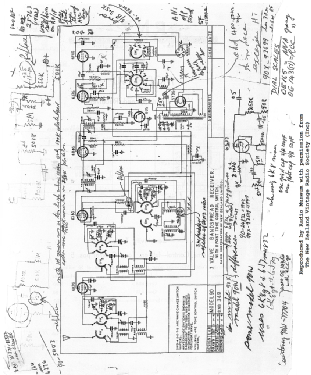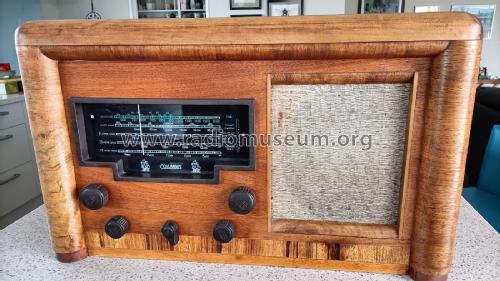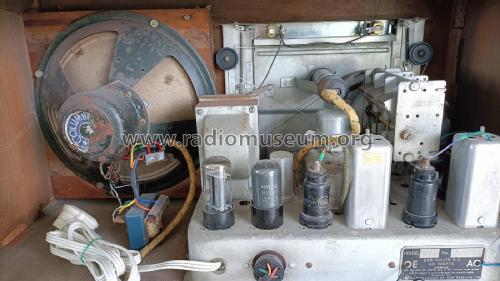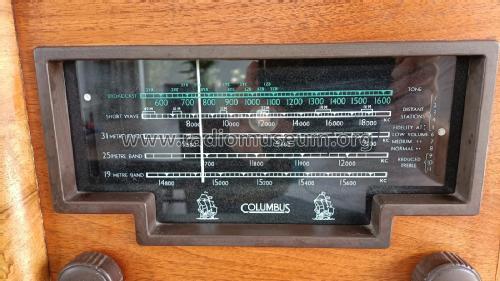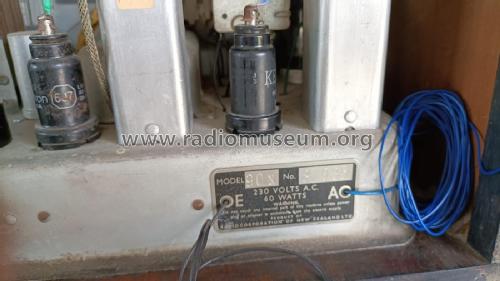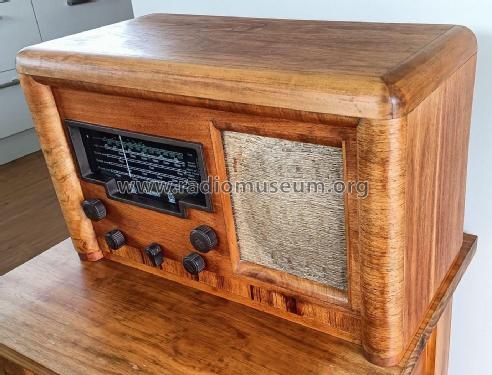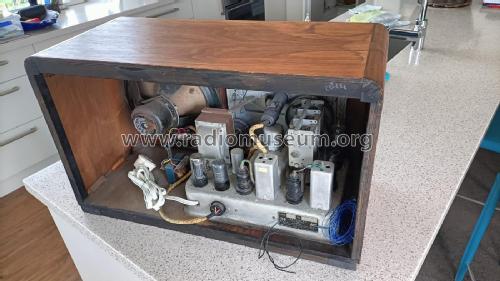Columbus Endeavour 90X
Columbus (Brand); Radio Centre Ltd.; Wellington
- Land
- Neuseeland-Aotearoa
- Hersteller / Marke
- Columbus (Brand); Radio Centre Ltd.; Wellington
- Jahr
- 1949 ?
- Kategorie
- Rundfunkempfänger (Radio - oder Tuner nach WW2)
- Radiomuseum.org ID
- 343090
Klicken Sie auf den Schaltplanausschnitt, um diesen kostenlos als Dokument anzufordern.
- Anzahl Röhren
- 7
- Hauptprinzip
- Super mit HF-Vorstufe; ZF/IF 455 kHz; 2 NF-Stufe(n)
- Anzahl Kreise
- 7 Kreis(e) AM
- Wellenbereiche
- Mittelwelle und mehr als 2 x Kurzwelle.
- Betriebsart / Volt
- Wechselstromspeisung / 230 Volt
- Lautsprecher
- Dynamischer LS, mit Erregerspule (elektrodynamisch)
- Material
- Gerät mit Holzgehäuse
- von Radiomuseum.org
- Modell: Columbus Endeavour 90X - Columbus Brand; Radio Centre
- Form
- Tischgerät-gross, - Querformat (breiter als hoch oder quadratisch).
- Bemerkung
-
The Columbus Endeavour 90X was the last in this model series which started with the Model 90 in 1942 followed by the Model 90W of 1947.
7-Valve superhet with RF stage 5 band console receiver.
See also Table Model 90 Endeavour, Console Model 90X Convoy, Console Model 90 Escort, Console Model 90 Convoy, Console Model 90 Squadron, Console Radiogram Model 90 Continental, Console Radiogram Model 90 Caravel & Console Radiogram Model 90 Flotilla.
Valves:
Early Model 90: 6K7G, 6J8G, 6B8G, 6J7G, 6U5, 6F6G, 5Y3G.
Later Model 90X: 6K7G, 6K8G, 6B8G, 6J7G, Y63, 6F6G, 5Y3G.Tone Control: The 11-position tone control, the 'Columbus Electronic Ear' as it was known, was an advanced solution to try and help the listener get the best listening experience based on what they were listening to.
Positions 1-5 are for distant stations and the radio is working with its full sensitivity. This means the set could also be pulling in static and interference - as you move towards position 5 more and more of the high frequencies are cut out to compensate.
Positions 6-8 are for fidelity between low and normal listening volumes - in any of these three positions the set would reduce its sensitivity and (according to Columbus sales literature) 'apply this extra power to achieve fidelity'. These positions are designed to give the highest quality of faithful reproduction at the expense of distance-getting ability. Position 8 is for listening at a normal volume, but as the volume reduces the highs and lows start to disappear due to the human ear being less sensitive to them at low levels, so positions 6 and 7 boost these to compensate.
Positions 9-11 are the reduced treble settings for local station listening - designed to remove surface hiss from high fidelity transmissions (as music transmissions were primarily from records at this time). It was noted that for studio broadcasts (live studio music) that this hiss did not occur so these settings should not be used in this case.
Manufactured by Radio Corporation of New Zealand Ltd for Columbus Radio Centre Ltd.
- Autor
- Modellseite von Brian Stevens angelegt. Siehe bei "Änderungsvorschlag" für weitere Mitarbeit.
- Weitere Modelle
-
Hier finden Sie 173 Modelle, davon 135 mit Bildern und 161 mit Schaltbildern.
Alle gelisteten Radios usw. von Columbus (Brand); Radio Centre Ltd.; Wellington
